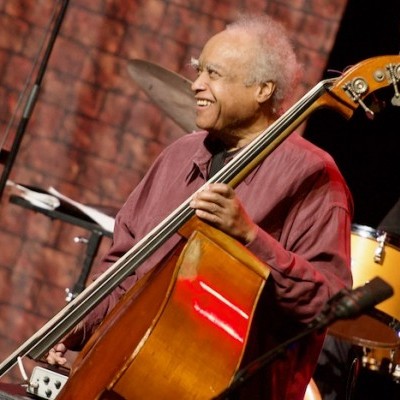Oct 28, 2025 10:47 AM
In Memoriam: Jack DeJohnette, 1942–2025
Jack DeJohnette, a bold and resourceful drummer and NEA Jazz Master who forged a unique vocabulary on the kit over his…
Can you talk about becoming involved with son jarocho?
I’m not very well known for this, but I’m Mexican by birth, and I think because of the environment that I grew up in, because of [my father] Chico O’Farrill, I have often been associated with Cuba and Afro-Cuban music, and I’ve done a lot of work in Cuba. But I think, if you’re gonna throw the word “Latin jazz” around, you better include all of the Americas, all of the Latin American nations.
I take personal blame for overlooking serious Mexican folk and Mexican jazz forms and idiosyncratic forms. I think it’s my loss, and to my detriment, and to jazz’s detriment, that we have paid much less attention to the beautiful and vibrant music of Mexico. It could be an incredible treasure and inspiration for jazz musicians.
I think I’m going to get in trouble for this, but son jarocho music is a lot harder to fake than jazz. These musics cannot be faked.
How did you choose the pieces and participants for Fandango At The Wall?
As far as the son jarocho selections, I learned from Jorge [Castillo] and Patricio [Hidalgo]. And then I thought it was really important to get a cross-section of styles and performers and musicians. For instance, Ana Tijoux, who I’m a huge, huge fan of, is a Chilean rapper. Regina Carter is a renowned jazz superstar; Antonio Sanchez is a composer and an incredible drummer. So, I was very careful to choose people who I thought were going to be sympathetic to the vibrations of the event. Almost all of us were able be at the Fandango Fronterizo and play along with these incredible artists. So, I wanted people who weren’t gonna come in and demand special attention, people who are going to come out, pull their instruments out and join in the festivities. And very central to that was the inclusion of some Iranian artists.
Were any of the album’s pieces specifically composed for the occasion?
The only piece that really was created to very consciously protest the horrific stand that this hateful administration has taken towards my people is the Invisible Suite. That piece was written as a protest to the manipulative and race-baiting practices of the president of the United States, who has done more to divide this nation than any human being in the history of our land.
I thought it was really necessary to write something about the border—Invisible Suite is about the people who are not seen, about the people who are too silent, the people who are ignored—unless they’re watering your lawn or they are cooking your food or picking up your garbage. Yeah, Invisible Suite is very much about the people, the real people, the real pueblos, the human beings who understand the atrocities that are being committed in the name of nationalism today. DB

Jack DeJohnette boasted a musical resume that was as long as it was fearsome.
Oct 28, 2025 10:47 AM
Jack DeJohnette, a bold and resourceful drummer and NEA Jazz Master who forged a unique vocabulary on the kit over his…

D’Angelo achieved commercial and critical success experimenting with a fusion of jazz, funk, soul, R&B and hip-hop.
Oct 14, 2025 1:47 PM
D’Angelo, a Grammy-winning R&B and neo-soul singer, guitarist and pianist who exerted a profound influence on 21st…

Jim McNeely’s singular body of work had a profound and lasting influence on many of today’s top jazz composers in the U.S. and in Europe.
Oct 7, 2025 3:40 PM
Pianist Jim McNeely, one of the most distinguished large ensemble jazz composers of his generation, died Sept. 26 at…

Drummond was cherished by generations of mainstream jazz listeners and bandleaders for his authoritative tonal presence, a defining quality of his style most apparent when he played his instrument unamplified.
Nov 4, 2025 11:39 AM
Ray Drummond, a first-call bassist who appeared on hundreds of albums as a sideman for some of the top names in jazz…

To see the complete list of nominations for the 2026 Grammy Awards, go to grammy.com.
Nov 11, 2025 12:35 PM
The nominations for the 2026 Grammy Awards are in, with plenty to smile about for the worlds of jazz, blues and beyond.…